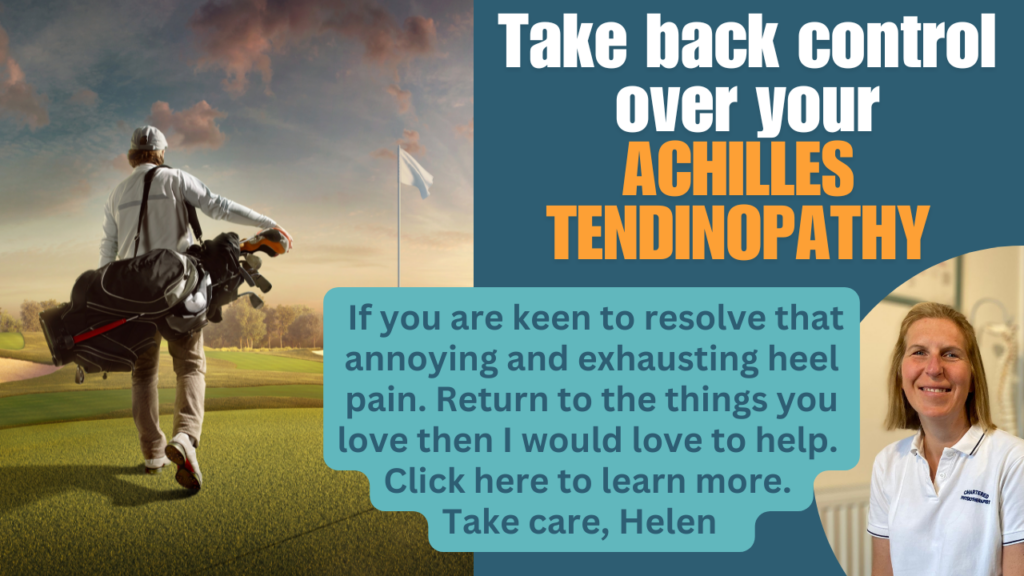Introduction
Achilles tendinopathy can be a debilitating condition that affects your ability to walk, run, or even stand comfortably. While effective treatment involves a combination of rest, physical therapy, and gradual strengthening exercises, the type of footwear you choose can either aid your recovery or exacerbate your symptoms. In this blog, we’ll explore the worst types of shoes for Achilles tendinopathy and why avoiding them is essential to managing your condition.
Why Footwear Matters for Achilles Tendinopathy
The Achilles tendon is the largest tendon in your body, connecting the calf muscles to the heel bone. It plays a crucial role in walking, running, and jumping. When this tendon is overused or improperly supported, it can become irritated and unhealthy, leading to Achilles tendinopathy, AKA Achilles Tendonitis.
The wrong footwear can put undue strain on the Achilles tendon, increase tension in the calf muscles, and hinder your ability to heal. Understanding which shoes to avoid is the first step in managing this condition effectively.
The Worst Shoes for Achilles Tendinopathy
1. Flat Shoes with No Arch Support
Flat shoes, such as ballet flats, sandals, and minimalist trainers, provide little to no arch support, which can be detrimental for those with Achilles tendinopathy. A lack of arch support causes overpronation (excessive inward rolling of the foot), putting extra tension on the Achilles tendon.
- Why They’re Bad: Flat shoes force the tendon to work harder during push-off, increasing strain and the risk of further damage.
- What to Look for Instead: Opt for shoes with moderate arch support and slight heel elevation to reduce tension on the tendon.

FREE MASTER CLASS – Join me and find out if you have Achilles Tendinopathy/ Tendonitis?
2. High-Heeled Shoes
High heels might seem like an unlikely culprit, but they can significantly worsen Achilles tendinopathy. While the elevated heel initially reduces strain by shortening the tendon, long-term wear can cause the tendon to become shortened and less flexible, increasing the risk of irritation when transitioning to flat or low-heeled shoes.
- Why They’re Bad: Prolonged use of high heels can lead to chronic shortening of the Achilles tendon, making it more susceptible to pain and injury.
- What to Look for Instead: Choose shoes with a heel drop of around 1-2 inches for a balanced support that doesn’t excessively shorten the tendon.
3. Shoes with Rigid Soles
Shoes with stiff, inflexible soles, such as certain dress shoes or slip-ons, can limit the natural movement of the foot, placing additional strain on the Achilles tendon. Rigid soles can also hinder proper shock absorption, forcing the tendon to absorb more impact during walking or running.
- Why They’re Bad: Lack of flexibility restricts the natural movement of the foot, increasing tension on the tendon.
- What to Look for Instead: Opt for shoes with flexible soles that allow for a natural range of motion.
4. Unsupportive Slip-Ons
Slip-on shoes often lack proper heel support, causing the foot to slide inside the shoe with each step. This lack of stability can lead to altered gait mechanics, increased tension on the Achilles tendon, and a higher risk of pain and injury.
- Why They’re Bad: The lack of stability forces the Achilles tendon to work harder to stabilize the foot, increasing the risk of strain.
- What to Look for Instead: Choose shoes with a secure heel cup and laces or straps that provide a snug fit.

Find out how I can help you regain control over your Achilles Tendon.
5. Shoes with an Inadequate Heel Counter
The heel counter is the stiff part at the back of the shoe that holds the heel in place. Shoes with an inadequate or overly soft heel counter allow excessive heel movement, which can aggravate the Achilles tendon.
- Why They’re Bad: A weak heel counter fails to control heel movement, increasing tension on the tendon.
- What to Look for Instead: Opt for shoes with a firm, supportive heel counter that helps keep your foot stable.
6. Flip-Flops and Open-Back Sandals
Flip-flops and open-back sandals provide no support and require the wearer to grip with their toes to keep the shoes on. This gripping motion can cause increased tension on the Achilles tendon and worsen symptoms over time.
- Why They’re Bad: The lack of structure and support leads to increased calf muscle activity and Achilles tendon strain.
- What to Look for Instead: Choose sandals with back straps and arch support for better stability and support.
What to Look for in Achilles-Friendly Shoes
If you have Achilles tendinopathy, choosing the right shoes is crucial for managing your symptoms. Here’s what to prioritise:
- Moderate Heel Drop: A slight elevation in the heel (about 10-12 mm) can reduce strain on the Achilles tendon.
- Arch Support: Choose shoes that offer good arch support to maintain proper foot alignment and reduce overpronation.
- Cushioning and Shock Absorption: Opt for shoes with adequate cushioning to absorb impact and reduce pressure on the tendon.
- Secure Fit: Ensure the shoes have a firm heel counter and secure lacing or straps to keep the foot stable.
- Flexible Sole: Look for flexible soles that allow natural foot movement without putting additional stress on the tendon.
Looking for the best shoes? These blogs will help;
- Best Running Shoes for Achilles Tendinopathy: A Physio’s Guide
- Top Footwear Choices for Achilles Tendon Support
- Can Barefoot Shoes Help with Achilles Tendinopathy?
FREE MASTER CLASS – Join me and find out if you have Achilles Tendinopathy/ Tendonitis
How Poor Footwear Can Worsen Achilles Tendinopathy Symptoms
Wearing the wrong type of shoes can lead to several complications for those with Achilles tendinopathy, including:
- Increased Pain and Inflammation: Shoes that don’t support the arch or heel can lead to greater tendon irritation and pain.
- Altered Gait Mechanics: Poor footwear can cause compensatory changes in your walking pattern, leading to additional strain on other muscles and joint
- Delayed Recovery: Consistently wearing unsupportive shoes can prolong recovery and increase the risk of chronic tendinopathy.
Conclusion
Choosing the wrong shoes can significantly worsen Achilles tendinopathy and delay your recovery. Flat shoes, high heels, rigid soles, and unsupportive slip-ons are some of the worst options for this condition. Instead, opt for supportive, well-cushioned footwear that offers moderate heel elevation and a firm heel counter. By avoiding problematic shoes and investing in Achilles-friendly options, you can reduce your symptoms, improve your comfort, and support your path to recovery.
For more guidance on selecting the best shoes for Achilles tendinopathy, check out our related blog on Top Footwear Choices for Achilles Tendon Support.
Take care, Helen
Helen Manders BSc (Hons) MCSP HCPC
Chartered Physiotherapist Since 2001




